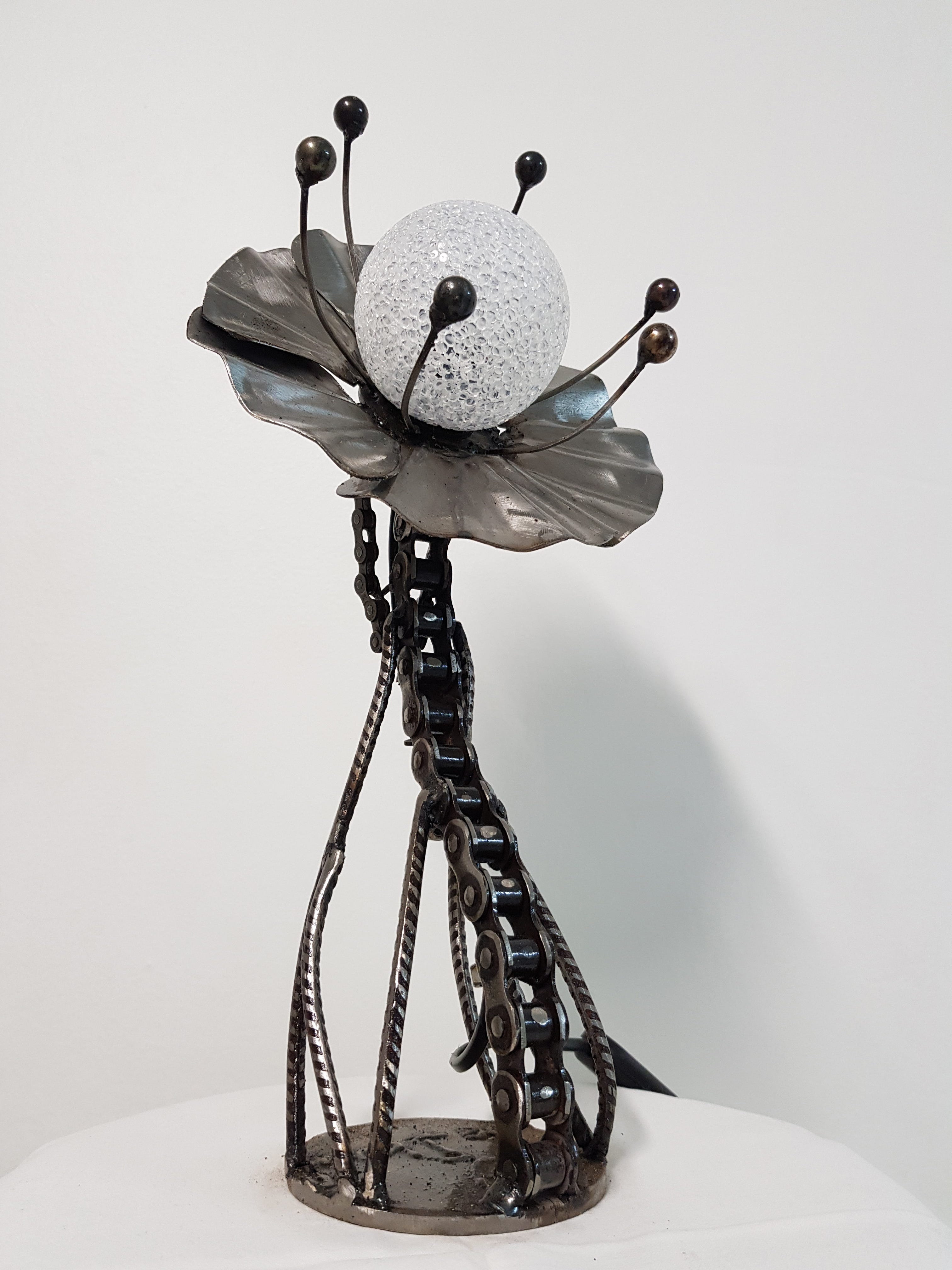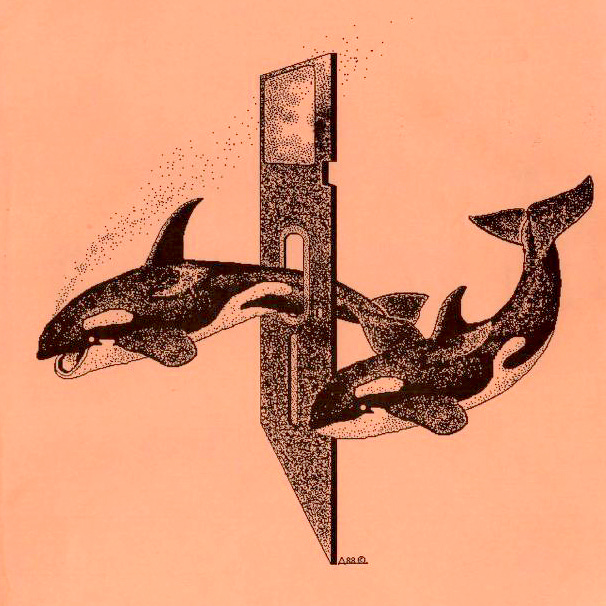NFTrees
Thinking beyond the hyper-capitalism of the 2021 cryptocurrency bubble
The artist group Terra0 gave digital cryptocurrency contracts to a forest. The forest now follows rules to sell pieces of itself to logging companies. The forest can earn money to preserve itself, repopulate logged areas, or acquire more land to expand. It will do this without human intervention. The artists describe the work as a "prototype of an economic unit in a post-human future."
Primavera di Filippi makes sculptures that self-evolve. Each Plantoid contains smart contracts that can gather information about what people like about them, then pay artists to design new versions that emphasize those features. The new versions have the same capacities for evolution.
(These and more are from Furtherfield’s DECAL, which I mentioned last week).

I have been working with and thinking about cryptocurrency since 2009. For my New Media degree at the University of Maine, I spent a year on a crypto-based, decentralized charitable giving network called Trust/Risk.
The idea behind the project was that if you had money, you donated by purchasing the cryptocurrency. But this wasn’t an investment. Your money was exchanged for votes — “tokenized.” Your money then became burned into the price of the currency, raising its value.
If you needed money, you could ask for it on a message board. It didn’t matter if you paid in or not. Those who paid in would vote to support your request, and at a certain threshold you'd get a payout. There would be no interest on the money you borrowed, but you had to pay it back by buying tokens. That was the trust part.
The more people who buy a cryptocurrency, the rarer the coins become, raising its value. In Trust/Risk, the longer you stayed in the system, the larger the value of your share would grow, and the more you could allot to those who requested it. Unlike traditional cryptocurrencies, you couldn't cash out. Your share translated only to more votes.
You could also get scammed. That's the risk part. There was no oversight: you weigh the balance of trust and risk. It's a wildly speculative charitable engine. The thinking was that wild speculation has raised billions in the stock market, so why not people? It has some limits, too. It was an undergraduate proposal, after all, and more oriented toward imagining this system than building it (though we did create a working prototype). But this was my anchor into the world of cryptocurrency: the idea of using it to inform and shape new forms of community.
I’m reading Cameron Harwick's paper on what money is and the problems it solved. It isn't about cryptocurrency, but discusses money as a signifier of trust, albeit trust in answers to questions such as “who has power?” Cryptocurrencies are oriented around a lack of trust: you put money into a decentralized computer system, because you don't trust institutions. That computer system burns a ton of energy to "prove" it is committed, because you can't trust people.
And yet, cryptocurrency speculation — buying money to inflate its value, as we see when people “invest” in cryptocurrencies — is about trust in the form of a ritual. The money isn't going anywhere. The way to use cryptocurrency these days is to put money into it, and withdraw it as cash when you need it. While it’s possible to use a fraction of a Bitcoin to buy ice cream in San Francisco, it’s not what most people are doing.
Most people, right now, are buying it like stocks. Take the cryptocurrency Dogecoin, which jumps every time Elon Musk mentions it. That's not about the exchange of goods: you can't "spend" Dogecoin on anything worth buying. It's an imagined community, and the investment is a digital ritual. The community is the Reddit message boards. When the value rises, they encourage each other to stay in, chastise each other for selling. Because if they all hold, the value rises. If some of them sell, it drops. But there's nothing useful about Dogecoin being worth $1.00 if you can't spend that dollar. The real incentive is the community.
Somehow, Dogecoin is doing exactly what I was imagining as an undergraduate 12 years ago, but without even the sparse controls I’d imagined in place. I see people on the Dogecoin Reddit boards asking for social permission to take money out of the pool to pay for things like pet surgery or a new car. They don't have to get approval, it’s a ritual thing. They feel like part of a community, and it spurs them into acting like it. They debate good and bad reasons to sell their stake. But it seems few are cognizant that the money they invest is more of a prisoner’s dilemma than an actual social or community investment. Dogecoin is zero-sum: it only rises if people buy, and someone has to sell.
Recently, the Chinese government issued a problematic but fascinating digital currency. In its version of Dogecoin, money can expire. I find this fascinating in how it changes the dynamics of wealth. By and large, cryptocurrencies and NFTs/smart contracts aren't very interesting to me as "investments." But they are interesting as an opportunity to re-evaluate, re-imagine, and rethink what money is and why we use it. While structured around quite radical ideas of capitalism, there's no reason they need to be.
Cryptocurrencies only constrain themselves by being "currencies." What if they weren't "money"? What if we reimagined what money is for, and how to do those things without it? What would a cryptocurrency for time look like? A cryptocurrency for community engagement? A cryptocurrency for forests, for sculptures, for, dare I say it — “social good”?

Hire me!
Folks, my time as a master’s student has come to an end and the time has come for me to find a job. I’d appreciate any tips, leads, or offers you might come across.
Remote, in person, consulting — I’m open to it all. Anything in design, technology/art, or research/tech-policy based is great. Combinations of all of those get a chef’s kiss. Please do let me know: eryk.salvaggio at gmail dot you-know-what.
And if you love the newsletter and want to help me out, you can always subscribe to a paid subscription to this very newsletter if you haven’t already. You don’t get anything extra, except an extra degree of my love.
What I’m Reading This Week
###
Alternative Internets and Their Lost Histories
Lori Emerson
A review of three books, each of which tells a story of a different kind of internet: Black Software, Lesbian Media Technologies, and Religious Missions. The essay, a great look at each book, also testifies to the reasons why we need to read alternative stories of our technologies.
Sociologist Karin Knorr Cetina reminds us that “a network is an arrangement of nodes tied together by relationships,” which serve as conduits for communication and resources. Her definition rightly suggests that the manner in which nodes are tied together could encompass any kind of technology or technique — including semaphore (a system of sending messages by holding arms or flags or poles in certain positions), Morse code, or, say, short wave radio. The medium matters ... Thus, while the excavation of alternative models of networks is important for the sake of a full historical record, it is also important for giving us tools to imagine how network-mediated relationships might be other than they are. It allows us to ask “what if” questions.
###
The Logic of the Like
Daniel Silver
This essay is about the flatness of the signals we give on social media — the “like,” — and theorizes about the narrowing of complex emotional and intellectual experiences that have resulted. While I’m skeptical that social media changes us all that much in normal conditions, its position as the a major means of social interaction and influence in 2020 has me rethinking it a bit. Silver notes that the “like” and the statements we make on social media are self-affixed identity labels — bumper stickers, or, as he puts it, “book covers.”
If we imagine that metadata is all we need, we are imagining a world in which there are only covers and no books, experience but no experiences. There might be pages, but every page is just another cover. It would be covers all the way down. You can read a book this way, extremely closely, but it will never escape the Logic of the Like. To do that, you need a book you can’t judge by its cover.
###
The Slow Violence of Emerging Technologies
Alix Dunn
Sometimes the difference between world-saving and world-crushing tech depends on which side of it you’re standing.
When we talk about socially beneficial technology, oftentimes we mean technology that does something useful. We talk collectively about that helpful function, long before we consider the ways in which it might manifest harm over time. I think in actuality, we see new technologies emerge that benefit some people, and often those people have power. For benefit to accrue, it has to smash through the world to reach a scale that can compound. And in that smashing, it causes harm that accrues. But the harm isn't accumulated by small groups the way the benefits are. Harm is diffuse, happening via many individual experiences and indignities. These harms are much more challenging to see (for those with power) than the benefits, until, all at once it becomes impossible to ignore.
The Kicker
I attended an online panel discussion on obfuscation and digital surveillance this week (thanks Şerife Wong!). While the discussion on the whole was great, Nicole Ozer’s talk referenced this series of videos from the New Mexico Civil Liberties Union. These surreal, prescient videos were produced by Godfrey Reggio, who later made the cult classic documentary film Koyaanisqatsi (and others).





